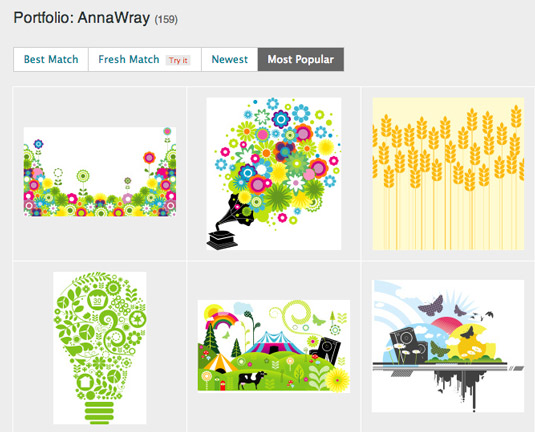If you’re an illustrator looking to turn your creative talent into a steady income stream, Shutterstock might just be the platform for you. With millions of images downloaded globally each day, Shutterstock offers a fantastic opportunity to showcase your work and earn royalties. But success doesn’t happen overnight. It requires understanding what buyers want, creating high-quality illustrations, and optimizing your submissions. Whether you’re just starting out or looking to refine your approach, this guide will help you navigate the ins and outs of selling illustrations on
Understanding Shutterstock’s Market and Audience

Before you start creating illustrations, it’s crucial to get a clear picture of Shutterstock’s market and audience. Shutterstock caters to a diverse clientele, including graphic designers, marketers, website owners, publishers, and small business owners. These buyers are often looking for images that are versatile, professional, and ready to use in various projects. So, understanding their needs can help you produce artwork that sells.
Here are some key insights into Shutterstock’s market:
- Popular Categories: Business & finance, lifestyle, technology, health, education, and food are among the top categories. Illustrations that fit these themes tend to perform well.
- Design Style Preferences: Clean, modern, and minimalistic styles are highly in demand, especially for corporate use. Bright colors and bold designs also catch the eye.
- Resolution & Quality: Buyers expect high-resolution images that are crisp and professional. Make sure your illustrations are well-crafted and free of pixelation or errors.
- Usage Rights & Licensing: Shutterstock offers different licensing options, but most buyers prefer images that are versatile for various uses, from websites to print materials.
Understanding this landscape helps you tailor your illustrations accordingly. Think about what’s trending, what styles are popular, and what industries are actively seeking visual content. Keeping an eye on Shutterstock’s top-selling images can give you a sense of current market demands. Remember, creating work that resonates with your target audience’s needs increases your chances of making sales and building a successful portfolio on the platform.
Tips for Designing High-Quality and Appealing Illustrations
Creating illustrations that catch the eye and sell well on Shutterstock isn’t just about putting pen to paper or clicking a mouse. It’s about combining skill, creativity, and a good understanding of what buyers are looking for. Here are some tried-and-true tips to help you craft illustrations that stand out:
- Master the fundamentals: Before diving into complex designs, make sure your basic drawing skills are solid. Pay attention to anatomy, perspective, and composition. A well-structured illustration looks professional and trustworthy.
- Focus on clarity and simplicity: While intricate details can be beautiful, many top-selling illustrations are clean and straightforward. Think about the message you want to convey—sometimes less is more.
- Use vibrant colors thoughtfully: Bright, harmonious colors attract attention, but avoid overwhelming the viewer. Stick to a color palette that complements your theme and evokes the right emotions.
- Pay attention to details and finishing touches: Small details can elevate your artwork, but avoid clutter. Use shading, highlights, and textures sparingly to add depth and realism without overcomplicating the image.
- Optimize for digital viewing: Remember that most buyers will view your illustrations on screens. Ensure your images are high resolution, well-lit, and free of pixelation or noise. Use vector formats when possible for scalability.
- Be consistent in style: Developing a recognizable style can help you build a brand. Whether it’s flat design, cartoonish, minimalistic, or detailed realism, staying consistent makes your work more appealing to repeat buyers.
- Seek feedback and revise: Don’t be afraid to ask peers or mentors for constructive criticism. Iteration is key—sometimes a small tweak can make a big difference in how your illustration performs.
Remember, creating appealing illustrations is a blend of technical skill and artistic intuition. Keep practicing, stay updated with current design trends, and always aim for quality over quantity. Happy illustrating!
Choosing the Right Topics and Themes for Your Artwork
One of the most crucial factors in creating illustrations that sell well is selecting the right topics and themes. After all, no matter how beautiful your artwork is, if it doesn’t align with what buyers are searching for, it might not get the attention it deserves. Here’s how to zero in on the best themes for your Shutterstock portfolio:
Understand current market trends: Stay updated by browsing Shutterstock’s trending images, popular categories, and top-sellers. Platforms like Google Trends or social media can also reveal what themes are currently in demand.
Identify evergreen themes: These are topics that remain relevant over time, such as health, education, business, technology, family, and nature. Creating versatile illustrations in these areas ensures steady demand.
Think about specific niches: Narrowing down to niche markets can be very profitable. For example, instead of general “business,” focus on “remote work,” “startup entrepreneurs,” or “freelancers.” The more targeted your themes, the easier it is to stand out.
Consider seasonal and holiday themes: Holiday-themed illustrations (Christmas, Halloween, Valentine’s Day) are always in demand. Planning ahead for seasonal content can boost your sales around key times of the year.
Focus on universal concepts: Ideas like teamwork, diversity, sustainability, innovation, and wellness resonate globally. Illustrations around these themes tend to have broad appeal.
Research your target audience: Think about who will use your illustrations. Are they marketers, educators, app developers, or bloggers? Tailoring your themes to their needs increases your chances of making sales.
| Theme Type | Examples | Why It Works |
|---|---|---|
| Evergreen | Health, Education, Nature | Consistent demand over time |
| Seasonal & Holidays | Christmas, Halloween, New Year | High sales periods, timely relevance |
| Niche Topics | Remote work, Vegan lifestyle, Cryptocurrency | Less competition, targeted audience |
| Universal Concepts | Equality, Sustainability, Innovation | Broad appeal across markets |
Remember, the key is to balance trending topics with timeless themes. Don’t be afraid to experiment with different ideas and see what resonates with buyers. By choosing the right themes and staying attuned to market needs, you’re setting yourself up for illustration success on Shutterstock!
Optimizing Your Illustrations for Shutterstock Search
Creating stunning illustrations is only half the battle — if people can’t find them, they won’t sell. That’s where optimization comes into play. Think of it as giving your artwork a little boost so it stands out in Shutterstock’s vast library. The goal? Make your illustrations easily discoverable by the right audience.
First up, keyword research is essential. Before uploading, spend some time searching Shutterstock to see what keywords are commonly used for similar illustrations. Notice the terms that pop up frequently and consider incorporating them naturally into your tags and descriptions. Tools like Google Keyword Planner or even Shutterstock’s own search suggestions can help you identify popular search terms.
Next, craft a compelling and descriptive title. Instead of generic titles like “Flower Illustration,” be specific: “Watercolor Sunflower Illustration for Spring Designs.” Clear, descriptive titles help users understand exactly what they’re getting and improve your chances of appearing in relevant searches.
When it comes to tags, think like a buyer. Use a mix of broad keywords (e.g., “nature,” “business”) and specific ones (e.g., “minimalist logo,” “vintage style”). Shutterstock recommends adding up to 50 tags, so be thorough but relevant. Avoid stuffing with unrelated terms — quality beats quantity.
Additionally, utilize the description field intelligently. Write a natural, engaging paragraph that explains the illustration’s theme, style, and potential uses. This not only helps with search algorithms but also gives viewers confidence in your work.
Lastly, remember that consistency is key. Regularly updating your portfolio with fresh, optimized illustrations keeps your profile active and increases your visibility. Keep an eye on trending topics and styles on Shutterstock, and tailor your keywords accordingly. Over time, your illustrations will become easier to find, leading to more downloads and sales.
Best Practices for Uploading and Tagging Your Artwork
Uploading your artwork to Shutterstock might seem straightforward, but following some best practices can make a big difference in how your images perform. Proper uploading and tagging not only streamline the process but also maximize your exposure and sales potential.
First, prepare your files carefully. Ensure your illustrations are in the correct format — usually JPEG, EPS, or AI files — and meet Shutterstock’s quality standards. High-resolution images (at least 4 MP for photos, vector files with clean lines for illustrations) look more professional and attract more buyers.
When it comes to naming your files, be descriptive and relevant. Instead of generic filenames like “IMG1234,” use descriptive names such as “modern-business-logo-vector.ai.” This small step can aid in SEO and help you keep your portfolio organized.
Now, onto tagging. As mentioned earlier, use all available tags to describe your artwork accurately. Think of tags as the keywords that connect your illustration to potential buyers’ searches. Use a mix of:
- General descriptors: “flower,” “technology,” “business”
- Style-specific tags: “minimalist,” “watercolor,” “flat design”
- Use-case tags: “social media banner,” “website background,” “presentation template”
Be honest and precise with your tags. Overusing vague or unrelated keywords can hurt your chances of being found and might violate Shutterstock’s content guidelines.
In the upload process, fill out all relevant metadata fields thoroughly. Write a clear, engaging description that highlights key features and potential uses. Remember, the more detailed your description, the better the search engine can match your illustration with user queries.
Lastly, pay attention to your artwork’s preview thumbnail. Make sure it’s clear and representative of the final piece. A compelling thumbnail can significantly influence whether someone clicks to view or download your work.
By following these best practices for uploading and tagging, you ensure that your illustrations are not only high-quality but also highly discoverable. This combination is what ultimately leads to more sales and a stronger presence on Shutterstock.
Promoting Your Illustrations to Boost Sales
Once you’ve uploaded your stunning illustrations to Shutterstock, the next step is making sure they get noticed. Promotion is key to boosting sales and increasing your visibility in a crowded marketplace. Think of it as giving your artwork a little extra push so it reaches the right audience.
First, leverage your social media channels. Share your Shutterstock portfolio or individual illustrations on platforms like Instagram, Pinterest, Twitter, and LinkedIn. Use relevant hashtags such as digitalart, illustration, or stockillustration to reach people searching for those topics. Don’t forget to include a direct link to your Shutterstock profile or specific images—that way, interested viewers can easily buy or license your work.
Next, consider creating a personal website or portfolio that showcases your best work, including links to your Shutterstock page. This acts as a hub where potential clients or art enthusiasts can find all your pieces in one place. Including testimonials or success stories can add credibility and encourage more sales.
Engage with online communities and forums dedicated to digital art, illustration, or stock imagery. Sharing your process, offering tips, or simply participating in discussions can help build your reputation and attract more clients. Remember, building relationships and trust often lead to word-of-mouth referrals and repeat sales.
Another effective strategy is offering exclusive discounts or promotions for your most popular illustrations. For example, you might run a limited-time offer or bundle multiple images together at a special price. Announce these promotions through your social media or newsletter, if you have one, to generate excitement and drive traffic.
Lastly, keep an eye on your analytics. Shutterstock provides data on how your images perform—what sells well, which keywords attract viewers, and more. Use this info to tweak your promotion strategies, focus on trending topics, or improve your descriptions. The more you understand your audience, the better you can tailor your promotional efforts for maximum impact.
Promoting your illustrations might take some effort, but it’s a crucial part of turning your creative passion into a steady income. Remember, consistency and engagement are key. Keep sharing, connecting, and optimizing, and you’ll see your sales grow over time!
Common Mistakes to Avoid When Creating Shutterstock Illustrations
Creating illustrations that sell well on Shutterstock is a fantastic goal, but it’s easy to stumble into some common pitfalls along the way. Being aware of these mistakes can help you create more marketable, high-quality images and avoid wasting time on things that won’t get you the results you want.
1. Ignoring Market Trends and Keywords
One of the biggest mistakes is not doing research beforehand. If you create illustrations that are outdated or don’t match current demand, they may sit unnoticed. Always check what’s trending or in demand—think about popular themes like remote work, sustainability, or certain color palettes. Use relevant keywords to ensure your images are discoverable by buyers searching for those topics.
2. Overcomplicating Your Artwork
While detailed illustrations can be stunning, overly complex images might not sell as well in the stock world. Many buyers prefer clean, versatile, and easily adaptable designs. Avoid clutter and focus on clarity—remember, your illustration might be used as a background or part of a larger project.
3. Neglecting Technical Quality
Low-resolution images, inconsistent lighting, or poorly aligned compositions can hurt your chances of sales. Always upload high-quality, properly formatted files that meet Shutterstock’s technical requirements. Use professional tools and double-check your work before submission.
4. Not Providing Variety
Relying on just a few styles, themes, or color schemes limits your potential. Diversify your portfolio by exploring different styles, subjects, and color palettes. This increases the chances that buyers will find something they need in your collection.
5. Ignoring Legal and Copyright Issues
Make sure your work doesn’t infringe on existing copyrights or trademarks. Use original content or properly licensed assets. This not only protects you legally but also ensures your illustrations are marketable and trustworthy.
By avoiding these common mistakes, you’ll be better positioned to create illustrations that appeal to buyers and stand out on Shutterstock. Remember, continuous learning and adaptation are part of the process. Keep an eye on what sells, improve your skills, and stay updated with platform guidelines—and your illustrations will have a much higher chance of success!
Conclusion and Final Tips for Success on Shutterstock
Creating illustrations that sell well on Shutterstock requires a blend of creativity, consistency, and understanding of market trends. Remember, the key to success lies in producing high-quality, original artwork that appeals to a broad audience while also standing out in a crowded marketplace. To maximize your earning potential, consider the following final tips:
- Research trending topics: Stay updated with current design trends and popular themes to tailor your illustrations accordingly.
- Optimize your keywords: Use relevant and specific keywords to improve the discoverability of your images in searches.
- Maintain consistency: Develop a recognizable style or niche that audiences and clients can identify with.
- Upload regularly: Consistent uploads keep your portfolio fresh and increase visibility on the platform.
- Engage with the community: Participate in forums or groups to learn from other artists, gain feedback, and stay motivated.
Additionally, consider creating a diverse portfolio that covers various subjects and styles, which can attract a wider range of buyers. Always adhere to Shutterstock’s submission guidelines and copyright policies to ensure your work remains compliant. By combining quality, strategic keywording, and active engagement, you can enhance your chances of creating illustrations that not only sell well but also build your reputation as a successful contributor. Ultimately, persistence and continuous learning are essential for long-term success in the competitive world of stock illustration.


